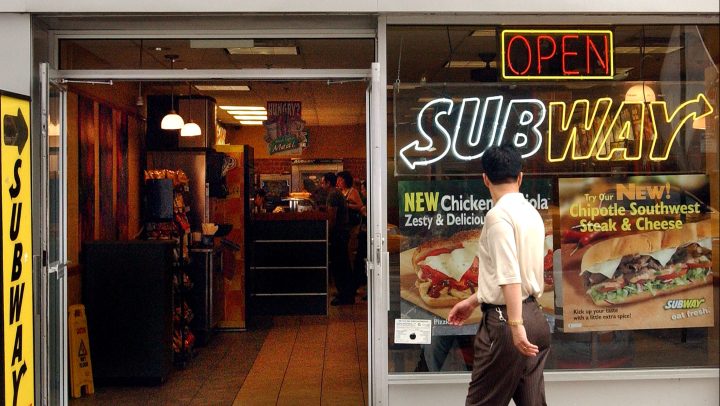
Remember the $5 footlong? The behavioral economics behind “reference prices”
Remember the $5 footlong? The behavioral economics behind “reference prices”

Gisel Carranza helps man the drive-thru window at a McDonald’s in Sacramento, California.
Although every now and then, the job feels more like working as a hotline operator for “1-800-I-Hate-Inflation.”
“We have people complain about the prices for the drinks, which is surprising to me,” said Carranza. “Which is not a lot. Actually, it was like $1.10 and it went up to like $1.40.”
Carranza said there’s something about the rising cost of a soda that is especially galling to patrons of the golden arches.
“I had a lady come over here and say she’s only going to pay $1.10 for it,” said Carranza. “And I was like, ‘Oh, it’s $1.40, I’ll get in trouble if I only charge you $1.10 for it.’ But it’s funny, ’cause she was like driving a Mercedes and stuff.”
It’s hard to empathize with the Mercedes driver haggling over the cost of a medium Diet Coke or whatever. But in her defense, there is an economic principle that explains why she was so upset: reference prices.
“So a reference price is a price that as a consumer, we are used to considering as the normal price for any product or service,” said Utpal Dholakia, a marketing professor at Rice University. “So prices that we have in our mind and we use for evaluating prices that we encounter.”
Reference prices can be external and provided by the seller. Think of a new car’s sticker price or even those “regular price versus sales price” shelf tags you see at the grocery store.
But our strongest reference prices are internal — rooted in years and years of buying everyday stuff, like a soft drink at your favorite fast food place.

“Internal reference prices are pretty much all memory-based,” said Dholakia. “So these are prices that you kind of know, you know?”
Part of the reason American consumers may be feeling kind of bleh about the economy right now?
We formed our reference prices over decades of very low inflation. Just think how long Subway’s footlong was $5.
“Month after month, year after year, if you go and have lunch for $5, then that becomes a very strong reference price,” sat Dholakia. “And then suddenly, when prices start to increase, you’re suddenly in a state of confusion.”
Marketers do have some clever ways to manipulate those reference prices. There’s shrinkflation: same price for your sandwich, but less sandwich. But there’s also just sticking a really expensive product next to a bunch of not-so-expensive ones.
“Go to your gym shoe store and look at your Air Jordans and the range of prices,” said Joe Nunes, a marketing professor at the University of Southern California. “Someone might say, ‘Well, I’m not going to spend $400 for a pair of shoes.’ But seeing the $400 pair of shoes makes a $200 pair of shoes seem not that expensive.”
Eventually, consumers do adjust their reference prices for inflation, Nunes added. Remember, once upon a time, $5 for a sandwich or $2 for a gallon of gas sounded like a complete rip-off.

But that adjustment can take a while.
“Today’s generation may become like the older generation and say, ‘Well, I remember what milk was. I remember what a gallon of gas was.’ So how long does it take for the resentment to go away? I don’t know,” said Nunes.
In a grocery store parking lot across from the Sacramento McDonald’s, Shawn Sullivan is loading four packs of soda into the back of his car. He came to SaveMart for the half-off sale: $5 per 12-pack.
“I remember when it used to be $5 for a 12-pack all the time, and so yeah it’s gone up quite a bit,” he said.
Sullivan said he can’t really see a day when the idea of $10 for a 12-pack of Dr. Pepper is considered cheap.
“Hopefully, if it gets to the point where I have to pay $10 no matter what for the 12-pack, I’ll start drinking more water,” said Sullivan.
A pro tip: McDonald’s doesn’t charge you for a cup of tap water.
There’s a lot happening in the world. Through it all, Marketplace is here for you.
You rely on Marketplace to break down the world’s events and tell you how it affects you in a fact-based, approachable way. We rely on your financial support to keep making that possible.
Your donation today powers the independent journalism that you rely on. For just $5/month, you can help sustain Marketplace so we can keep reporting on the things that matter to you.











